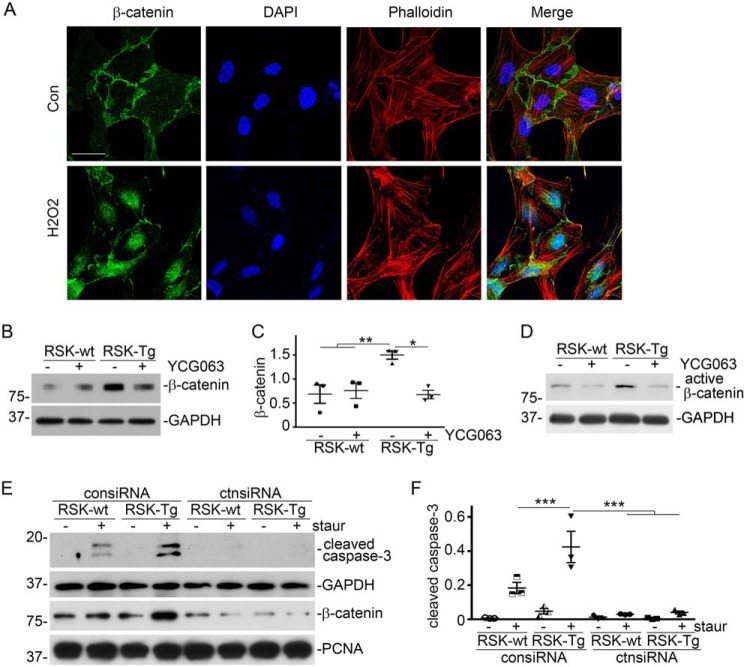Figure 5.
ROS-activated β-catenin mediates fibroblast p90RSK-induced tubular epithelial apoptosis. A, HKC-8 cells were incubated with 1.5 μm H2O2 for 1 h, followed by immunofluorescence staining of β-catenin (green) and phalloidin (red). Scale bar, 25 μm. B, ROS-specific inhibitor YCG063 (50 nm) was added into the fibroblast–epithelial coculture, followed by Western blotting for β-catenin and GAPDH in epithelial lysates. C, quantitation of β-catenin abundance. *, p < 0.05; **, p < 0.01; n = 3 experiments. D, Western blotting for active β-catenin and GAPDH in epithelial lysates. E, HKC-8 cells were transfected with control or β-catenin siRNAs, followed by coculture with RSK-Tg or RSK-wt fibroblasts with or without 50 nm staurosporine for 4 h. HKC-8 lysates were subjected to Western blotting for cleaved caspase-3 and GAPDH. Nuclear extracts of HKC-8 were probed with β-catenin and PCNA. F, quantitation of cleaved caspase-3 abundance in epithelial lysates. ***, p < 0.001; n = 3 experiments. staur, staurosporine; consiRNA, control siRNA; ctnsiRNA, β-catenin siRNA. Error bars, S.E.

